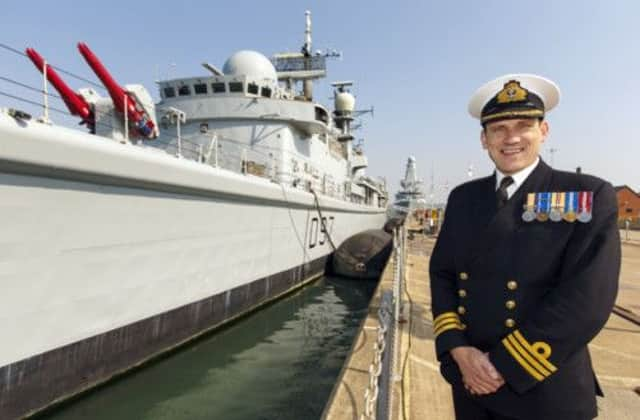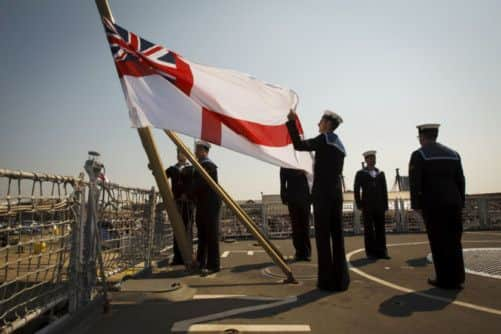Ceremony held to bid farewell to HMS Edinburgh


The ship’s White Ensign was lowered for the last time at the end of the hour-long service at Portsmouth Naval Base, ending an era which began with the launch of the first Type 42, HMS Sheffield, in 1971.
The ageing Type 42s have gradually been phased out of service to make way for six successor Type 45s which are among the most modern and powerful warships in the world.
Advertisement
Hide AdAdvertisement
Hide AdAmong the guests at the decommissioning ceremony was Lady Heseltine - HMS Edinburgh’s sponsor - accompanied by her husband, former defence secretary Lord Heseltine. Seventeen former Edinburgh commanding officers and dozens of Type 42 veterans also attended.


Edinburgh’s 270 ship’s company were on parade during the ceremony and were inspected by Lady Heseltine, who launched the ship on April 14, 1983, and senior naval officers.
RAF Typhoon and Hawk aircraft, together with a Sea Fury from the RN Historic Flight, performed a flypast before the final lowering of the ship’s flag.
Edinburgh’s commanding officer, Commander Nick Borbone, said: “We have experienced a lot of lasts over the last few months, the last time leaving Portsmouth and the last time arriving back but after today it really does all come to an end as we haul down the White Ensign.
“It’s very emotional as it has been a huge privilege to command the last of the Type 42s. It is also a day of celebration when we remember the 40 years of faithful service that ‘The Fighting 42s’ have given, manned by dedicated men and women, proud to serve in this world-renowned class of ship.”
Cdr Borbone said most of the crew would go on to serve on the new Type 45s and the next generation of aircraft carriers.
Captain Martin Ladd, the ship’s first commanding officer who is now retired, said: “It is about 28 years since I was piped over the side and left the ship and I think it looks as fine today as it did then.
“The Type 42s were at the cutting edge of technology when they were introduced but with the new carriers being built and modern ships coming in with more effective weapons, technology has advanced and Edinburgh bows out gracefully in the path of those before her.”
Advertisement
Hide AdAdvertisement
Hide AdLeading Steward Gemma Raybold, one of Edinburgh’s final ship’s company, said: “It’s a big day. Some people have been looking forward to moving on but it is really sad because everyone has bonded really well and we are breaking up that family.”
Ableseaman Tom Bradshaw said: “It is emotional to see her go but everything has to move on. She’s had a good send-off and I am excited to move on to something new.”
Built by Cammell Laird at Birkenhead, Edinburgh was commissioned in December 1985 - the 14th and final Type 42 to enter service.
Its first deployment was to the Arabian Gulf in 1987, escorting merchant ships safely through the region.
The following year the Duke of York joined as one of the ship’s officers, serving during a six-month round-the-world deployment.
Edinburgh took part in the second Gulf War in 2003, supporting Royal Marines ashore and acting as escort to the helicopter carrier HMS Ocean.
The Type 42 air defence destroyers have been the backbone of the Royal Navy’s fleet for nearly 40 years.
They have served on operations across the globe, including the Falklands conflict of 1982 where HMS Sheffield was sunk by an Exocet missile.
Advertisement
Hide AdAdvertisement
Hide AdAs recently as 2011, HMS Liverpool was ordered to Libya as part of the Navy’s contribution to Nato’s naval blockade of the country during its civil war.
It supported the no-fly zone by controlling Nato aircraft from the sea, enforced the embargo on arms sales to the Gaddafi regime, and fired 111 high-explosive rounds against targets ashore.